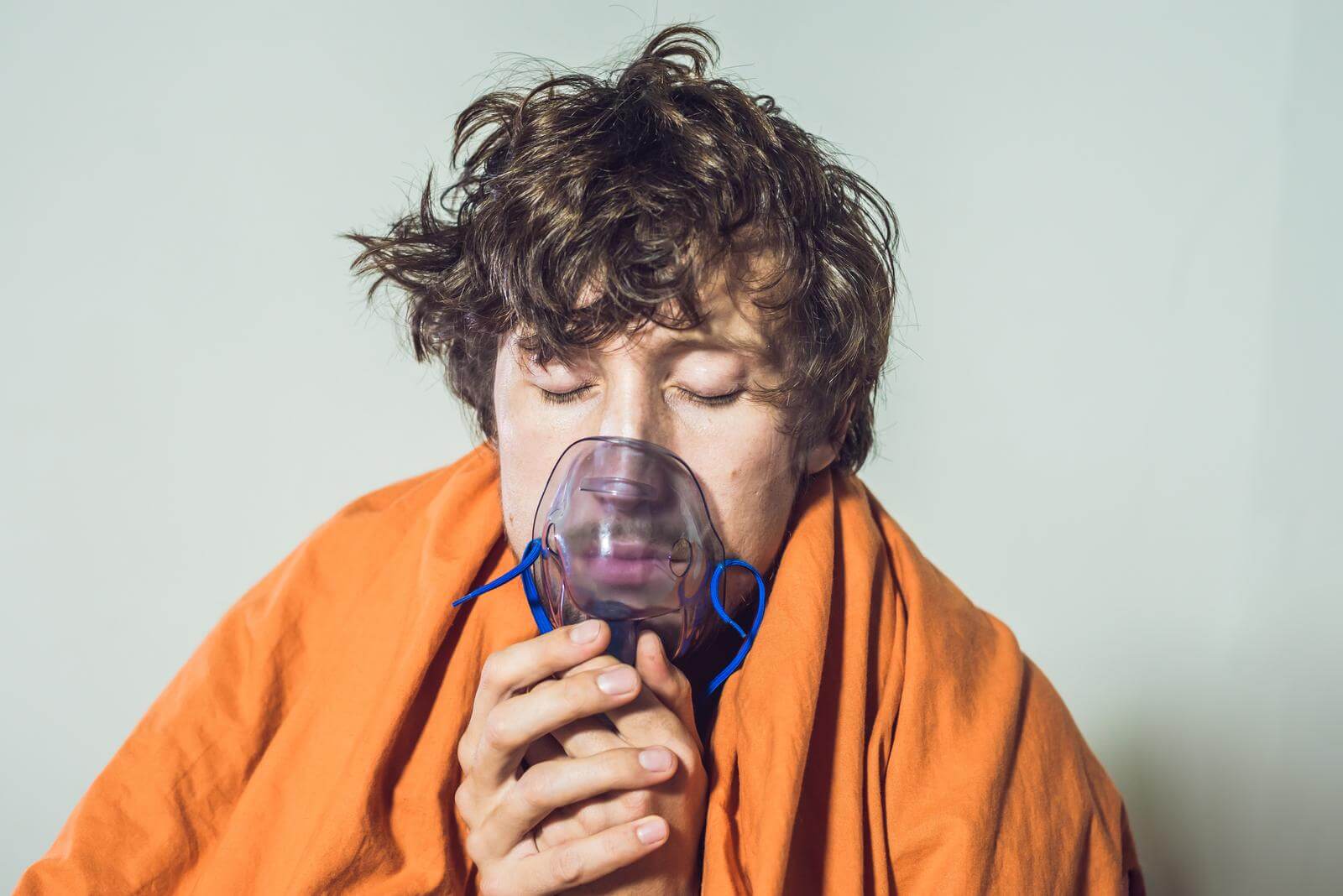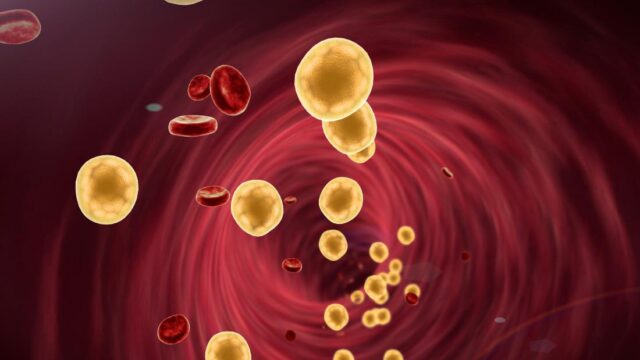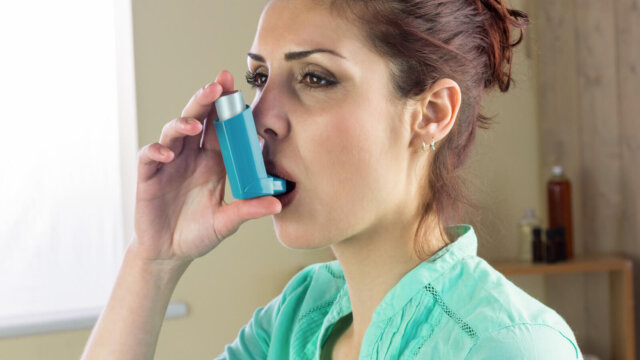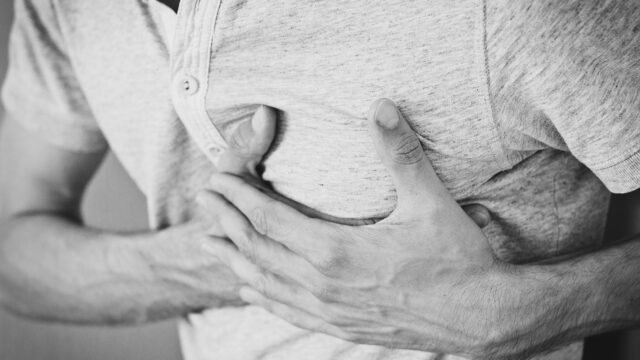FTC disclaimer: This post may contains affiliate links and we will be compensated if you click on a link and make a purchase.
Have you ever tried using a nebulizer to treat asthma? Or maybe you’ve heard of them before but never used one yourself?
In this article, we’ll look at their use, why people use them, and how to choose the right one for you.
A nebulizer is a device that helps deliver medicine into the lungs through tiny droplets of liquid. They are often used by asthmatics who need extra help breathing during an attack.
If you suffer from asthma, you may already know the benefits of inhaling medication through a nebulizer. However, did you know there are different types of nebulizers available?
Nebulizer for Asthma Treatment

A nebulizer is a machine that releases medication in the form of mist. Then, this mist is inhaled through a mask or mouthpiece. This device is commonly used to treat respiratory conditions such as asthma, bronchitis, and COPD.
The main advantage of using a nebulizer is that it delivers the medication directly to the lungs. This is especially beneficial for people who have difficulty using inhalers.
Inhalers can be tricky to use, and sometimes the medication does not get delivered to the lungs effectively. Nebulizers are also very portable, which makes them convenient to use at home or on the go.
In general, they are used to administering high doses of reliever medicine in an emergency, for example, in a hospital or a doctor’s surgery.
However, as far as asthma attacks are concerned, they are not more effective than an inhaler and spacer.
- A nebulizer consists of the following parts:
- An electrical air pump (or compressor) that pumps air at a high pressure
- The nebulizer bowl to place the medicine
- A long plastic tubing that connects the pump (or compressor) with the nebulizer bowl
- A mouthpiece or facemask is used to breathe in the medicine.
Who can Benefit from Nebulizer
It has been reported that only a few asthma patients need a nebulizer for short-term use, monitored and regulated by the doctor’s advice.
- Only certain groups of people require a nebulizer to manage their asthma
- Certain old asthma patients who have chronic asthma get better relief with a nebulizer.
- People with disabilities cannot use handheld inhalers and spacers.
- People using medications require nebulizers.
Demonstration of Nebulizer
- Whoever supplies you with a nebulizer will demonstrate the following:
- How the tubing, nebulizing bowl, facemask, and mouthpiece are attached
- How the medication is introduced
- How the mask or mouthpiece is fitted
Maintenance of Nebulizer
People who purchase based on their doctor’s advice should know the following:
- The place where the nebulizer bowl, tubing, and mouthpiece or facemask can be replaced
- The place where the nebulizer can be serviced.
It is recommended that you service the nebulizer once a year. A service agent checks the compressor and the electric safety of the nebulizer. If the nebulizer is used daily, one may need frequent checks on the pressure and flow.
How does Nebulizer work?
A nebulizer converts the liquid medication into a fine mist, inhaled through a mouthpiece or mask. The mist is created by a compressor, which forces air through the liquid medication.
The medication is typically placed in a cup attached to the nebulizer. The compressor is turned on, and the medication is drawn into the device. Once the medication is in the nebulizer, the compressor forces air through the medication, creating a mist.
The mist is then inhaled through the mouthpiece or mask. The person using the nebulizer must inhale deeply and evenly to ensure the medication reaches the lungs.
Nebulizers are most commonly used to deliver bronchodilators, drugs that relax the muscles around the airways and make breathing easier.
However, nebulizers can also be used to deliver other types of medications, such as antibiotics and anti-inflammatory drugs.
What are the benefits of using a nebulizer?
There are several benefits of using a nebulizer, including:
- Nebulizers are a quick and easy way to deliver medication to the lungs.
- Nebulizers are less likely to cause side effects than other methods of delivering medication to the lungs, such as inhalers.
- Nebulizers can be used to deliver a variety of different medications, including bronchodilators, antibiotics, and anti-inflammatory drugs.
- Nebulizers are portable and can be used at home or on the go.
What are the risks of using a nebulizer?
There are a few risks associated with using a nebulizer, including:
- It is possible to overdose on medication if the nebulizer is not used properly.
- If the nebulizer is not cleaned properly, it can become a breeding ground for bacteria.
Nebulizers can be expensive, so it is important to check with your insurance company to see if they will cover the cost of the device.
Types of Nebulizer
Nebulizers come in a variety of designs, sizes, and shapes. The most common type of nebulizers are:
A jet nebulizer uses compressed air to create a fine mist inhaled through a mouthpiece or face mask.
Ultrasonic nebulizers use high-frequency sound waves to create a mist inhaled through a mouthpiece or face mask.
Mesh nebulizers use a mesh screen to create a mist inhaled through a mouthpiece or face mask.
Nebulizers can be powered by electricity, batteries, or compressed air. The power source you use will depend on your preferences and needs.
Electricity-powered nebulizers are the most common type of nebulizer. They are easy to use and can be used with a plug-in power source or batteries.
Battery-powered nebulizers are portable and can be used without a power source. However, they may not be as powerful as electric nebulizers.
Compressed air-powered nebulizers are the most powerful type of nebulizer. They are often used in hospital settings.
Medicine used in Nebulizers
Nebulizers can be used with a variety of medications. The type of medication you use will depend on your condition and the severity of your symptoms. The most common medications used with nebulizers are:
- Bronchodilators
- Corticosteroids
- Antihistamines.
Bronchodilators are used to treat asthma, COPD, and other conditions that cause the narrowing of the airways. They work by relaxing the muscles around the airways, making breathing easier.
Corticosteroids are typically used to treat inflammation and are often used in conjunction with bronchodilators. Antihistamines are used to treat allergies and hay fever.
Nebulizers can also be used with other medications, such as antibiotics and antifungals. However, talking to a doctor before using any medication with a nebulizer is important.
There are some side effects associated with nebulizers. The most common side effect is a dry mouth. Other side effects include sore throat, coughing, and wheezing.
In rare cases, nebulizers can also cause dizziness and fainting. If you experience any of these side effects, it is important to stop using the nebulizer and see a doctor right away.
Nebulizers can be used as often as needed, depending on your condition. Some people use them daily, while others only use them when they have an asthma attack or other respiratory emergency.
If you are using a nebulizer for the first time, it is important to follow the instructions that come with the device. You should also talk to your doctor or pharmacist about how to use the nebulizer and what type of medication to use.
It is also important to clean your nebulizer regularly. You should follow the instructions that come with the device for how to clean it.
Talk to your doctor or pharmacist if you have any questions about using a nebulizer.
How to choose Nebulizer?
Different types of nebulizers are available, and the choice of which one to use depends on the individual’s needs.
Some nebulizers are battery-operated, while others need to be plugged into an electrical outlet. Some nebulizers can be used with a mask or mouthpiece, and others come with a cup.
The most important factor to consider when choosing a nebulizer is the size of the particle that it produces. The smaller the particle, the more easily it will be inhaled into the lungs.
A nebulizer that produces large particles is not as effective at delivering the medication to the lungs.
Another factor to consider when choosing a nebulizer is the amount of medication that it can hold. Some nebulizers can only hold a small amount of medication, while others can hold a large amount.
The size of the nebulizer will also determine how long it will take to deliver the medication.
How to use a Nebulizer?
If you’re not familiar with how to use a nebulizer, don’t worry! In this section, we’ll walk you through the steps of using a nebulizer. We’ll also provide tips on getting the most out of your nebulizer treatments.
Using a Nebulizer
- Fill the nebulizer cup with the prescribed medication.
- Connect the tubing to the air compressor.
- Place the mouthpiece of the nebulizer between your teeth and lips.
- Turn on the air compressor.
- Breathe normally through your mouth while the medication is being delivered.
- When the medication is finished, turn off the air compressor and disconnect the tubing.
- Rinse the nebulizer cup with warm water and allow it to air dry.
Tips for Using a Nebulizer
- Follow the instructions that came with your nebulizer.
- Use the nebulizer at the same time each day.
- Store the medication in a cool, dry place.
- Clean the nebulizer after each use.
- Don’t use a nebulizer if you’re sick.
- Use a spacer with your nebulizer if you have one.
- Take slow, deep breaths while using the nebulizer.
- Rinse your mouth after using the nebulizer.
- Talk to your doctor or pharmacist if you have any questions about using a nebulizer.
Safety Precaution and Cleaning for Nebulizer
The following groups of medicines can be used in a nebulizer: preventers, relievers, and other antibiotics needing nebulization.
The following precautions must be taken to ensure the safety of the nebulizer.
The (Compressor) Nebuliser
- When you do not use the nebulizer, keep it in a dust-free place.
- Wipe it with a damp cloth regularly
Tubing
- Tubing does not require regular washing. If there is condensation on the tubing, you need to detach the nebulizing bowl, turn on the nebulizer, and remove the condensation by shaking off the tube.
- Replace the tubing if it is dirty or starts developing cracks
- Do not expose the tubing and bowl to direct sunlight
Nebuliser bowl
- This has to be washed after each use to remove the crystallized salt solution that has to be used along with the medication while nebulizing.
- After rinsing the bowl, do not wipe it dry. Rather, connect it to the tubing, switch on the nebulizer, and blow air into it for a few seconds.
- Wash the bowl with dishwashing liquid and water at least once a week.
Facemask or mouthpiece
It needs to be washed every day with dishwashing liquid and water. You need to replace it if it cracks or does not fit properly. The elastic of the mask is easy to replace.
Conclusion
Nebulizers are a quick and easy way to treat asthma. They can be used at home or on the go and are relatively affordable. If you or your child has asthma, talk to your doctor about whether a nebulizer is right for you.








